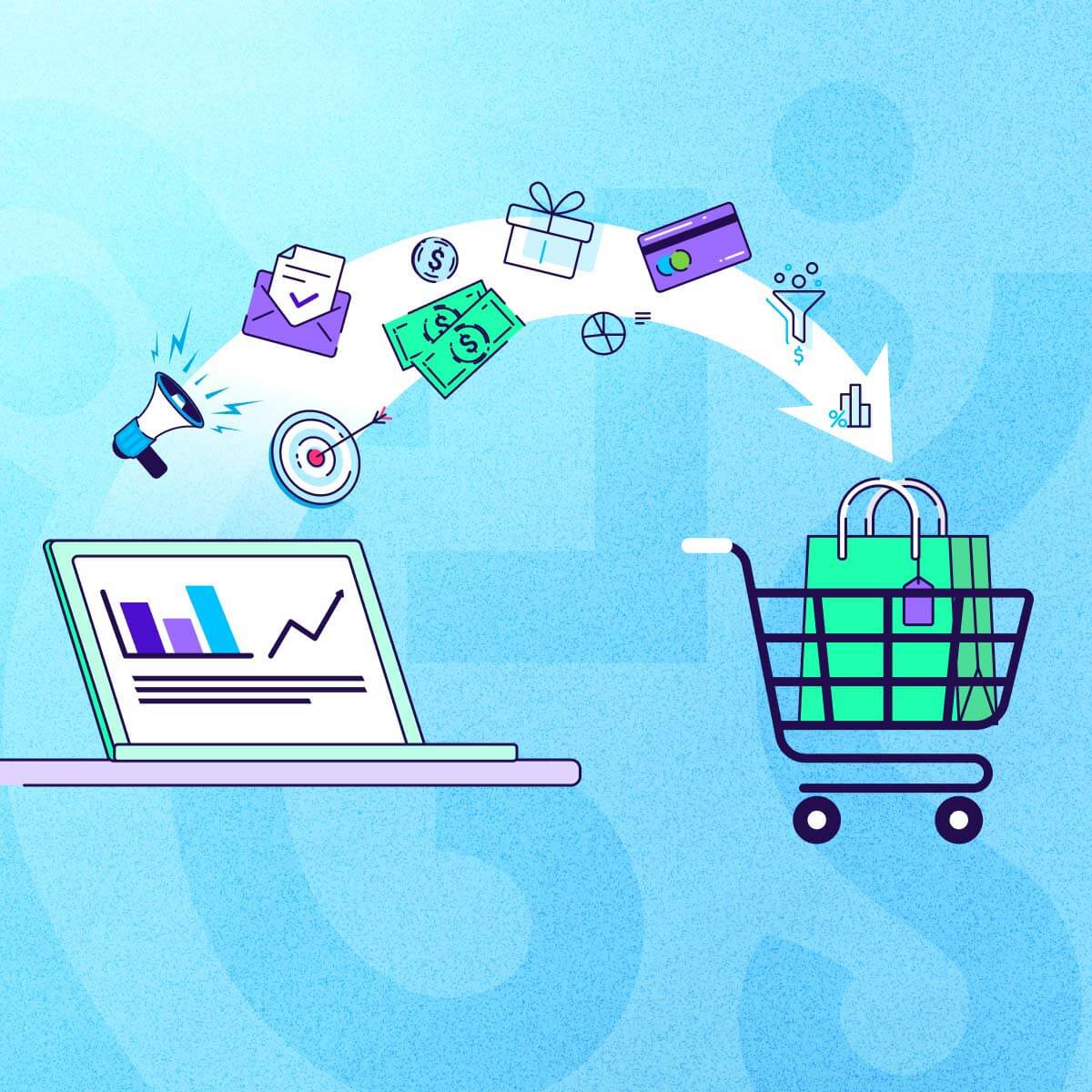
Turn app downloads into long-term value with app user segmentation
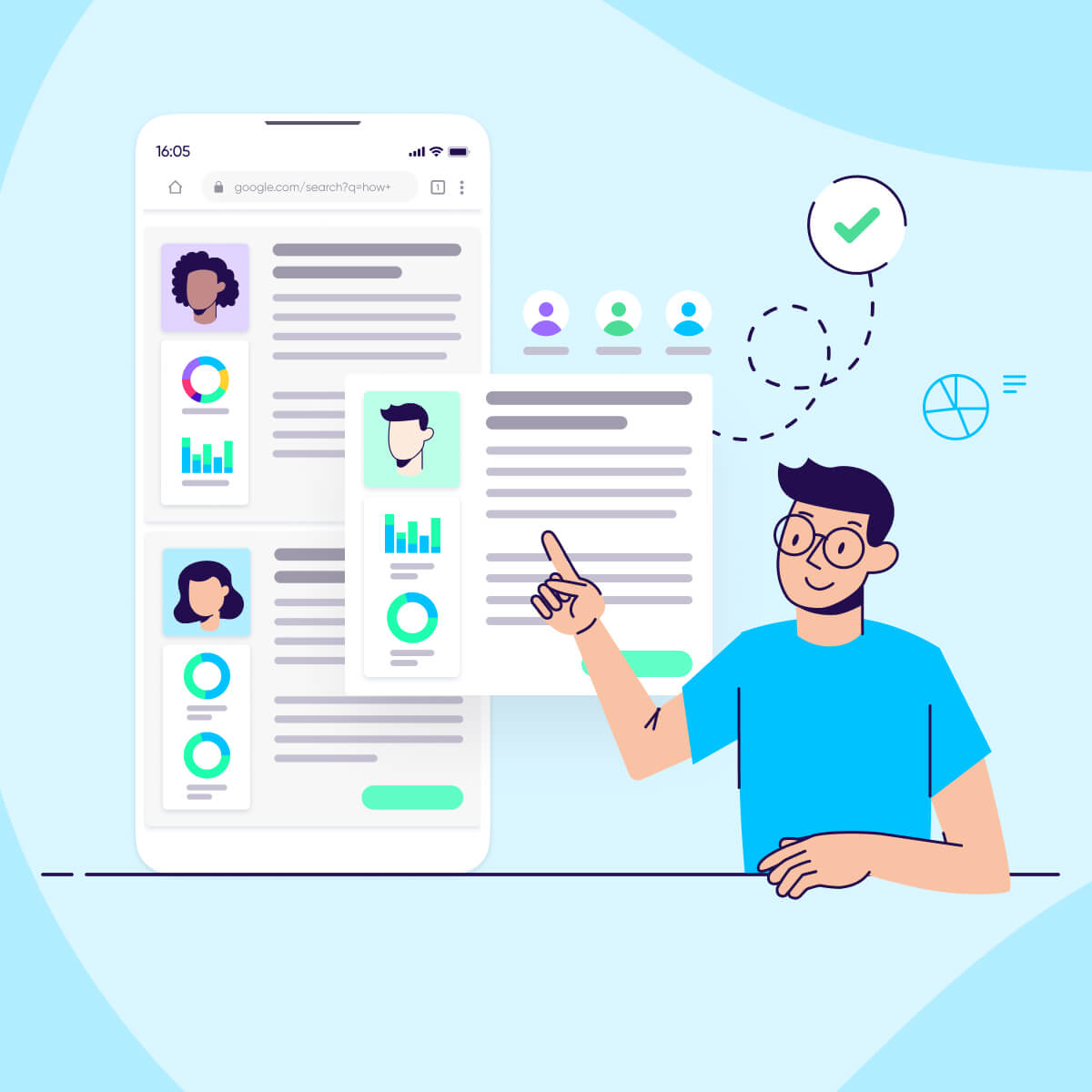
Are your app marketing messages and push notifications sending your customers irrelevant information? Or are you engaging your audience in targeted, powerful ways?
Suppose your marketing messages are not appropriate for the target segments of your audience. In that case, you may pay a small fortune in advertising dollars to get app downloads, only to drive your customers away with a lack of relevance and respect for their interests and needs.
Learn how you can enthrall your app users and avoid uninstalls,improve customer engagement, and increase long-term customer value — by using app user segmentation.
What is app segmentation?
An easy way to understand app user segmentation is to consider how you may separate members of any target audience into groups with similar characteristics.
Here are some examples of such user groupings:
New vs. heavy users
New users may need encouragement to make in-app purchases. This motivation may take the form of presenting an irresistible deal. For example, to level up a gaming experience by buying digital assets or trading points at a bargain price.
However, a heavy user may already have an extensive history of making in-app purchases and may be more willing to make a higher value in-app purchase to add some special game features to their collection.
Knowing what to offer different types of users is a highly efficient way to enhance user experiences and potentially maximize revenues.
Paying users vs. new (and free) users
A common segmentation method segregates users into paying app users and new app users that have downloaded the app, but have not yet made an in-app purchase.
Converting free users into paying users is a priority goal for most app developers. That said, it would be best if you tailored your marketing efforts to your users’ specific needs, thereby not driving any potentially paying customers away.
Multiple segmentation criteria
Suppose your target audience contains a mixture of genders, ages, and locations. Perhaps your product sells best as an in-app purchase made by singles living in a metropolitan area.
Appropriate targeting of these users through app user segmentation would identify the subgroup of the total app audience who are single and those in that subgroup living in big cities.
A common method used to depict segmentation is a Venn diagram of the target audience, which is a set of overlapping circles.
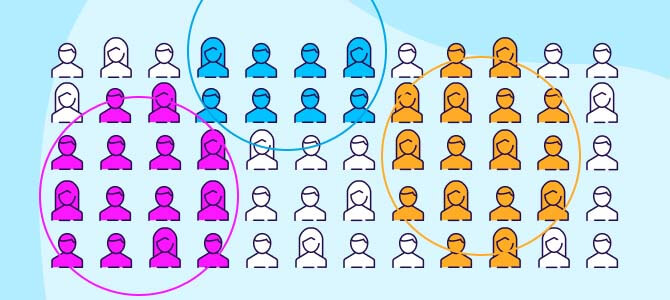
For example, one large circle (A) might be the target audience of all potential app users. A smaller circle (B) may contain the singles in the target audience of circle A. This group includes those who have used the app and singles who have not yet used the app.
Another smaller subgroup might be circle C, containing users who are singles living in big cities. Circle D may be singles in big cities who have not yet downloaded the app, which is your specific targeted group for an ad campaign.
Each circle in the Venn diagram represents a characteristic or criterion, with each of the segmented groups owning those characteristics being represented where the circles overlap.
The methodology of finding a sub-group within a sub-group is a process called “drilling down.” This process, used with multiple reiterations, may fine-tune the ultimate target for an app marketing campaign.
Why is app segmentation important?
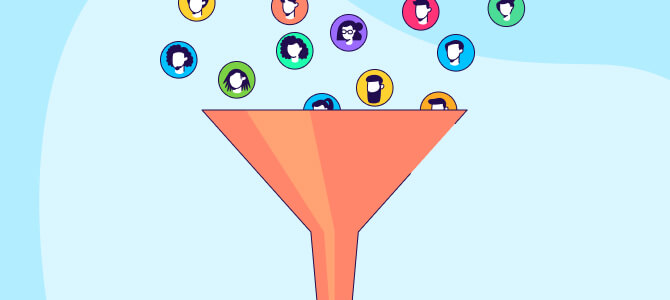
App segmentation lets you understand your customer’s needs and offer highly relevant content. Customers have strong expectations about app experiences, which include increased personalization that improves the user experience.
The benefits of app user segmentation include the following:
- Cost efficiencies: Increased conversion rates and reduced ad spending to reach a target customer results in improved marketing cost-effectiveness.
- Improve customer profiles: App user segmentation helps you understand your customers better. The data gathered may help automate sending personalized messaging via multi-channels such as emails, in-app instant messages, and push notifications.
- Better user experience: Well-targeted campaigns increase conversions, improve customer retention, increase the lifetime value (LTV) of customers, and stimulate customer loyalty.
- Reactivate dormant customers: Tracking customer use for an app identifies the ones that went dormant. Sending this segment personalized messages could help reactivate them.
- Proactive engagement to avoid uninstalls: About half of the users who download the average app end up uninstalling it within the first 30 days. This high uninstall rate costs the average app developer $33,000 in lost revenues each month. Proactive engagement, based on app user segmentation, helps reduce uninstalls and the lost revenue that ensues.
- Personalized push notifications: App user segmentation combined with personalization — which can include things like a customer’s name or gender — can improve the results of push notifications. Personalization can also be a response to user actions, such as abandoning a cart. By personalizing push notifications, you may see open rates up to eight times higher than non-personalized messages.
App segmentation methods
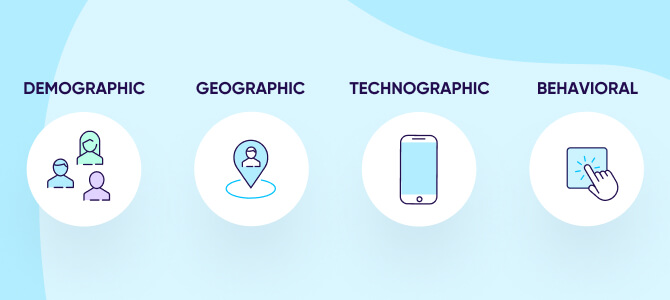
Behavioral, economic, demographic, geographic, technographic, cultural, and psychographic segmentation are some of the major criteria for app user segmentation.
1 – Behavioral
Behavioral segmentation is based on what you are doing or not doing. Examples are your spending and savings habits, credit card use, search history, bookmarks, software features, and session frequency or duration.
2 – Economic
This category focuses on a customer’s lifetime value (LTV). Is your customer a new user? Has your customer made a purchase before? Is there an opportunity for a referral to make another sale or an upsell? Is the customer a heavy user in the segmented group responsible for creating the most revenue?
3 – Demographic
Demographics could include age, gender, nationality, income, marital status, education, occupation, and more.
4 – Geographic
Using the global positioning system (GPS), geo-location may target specific areas. Geo-targeting can include country, state (or province), cities, towns, suburbs, neighborhoods, and even streets.
One common use of geographic segmentation is localization, as in presenting content in the targeted area’s language.
5 – Technographic
Are you a Mac or a PC person? Do you use a mobile phone with the android operating system or an iPhone? Answers to questions like these help build your technographic profile, which includes your preferred hardware, software, and mobile devices.
6 – Cultural
Cultural segmentation includes the “wow” and “cool” factors. The wow factor happens when a customer or potential customer is pleasantly surprised by the added value of a product or service.
The cool factor is how users think they might appear to others when they use a product or service.
For example, cultural segmentation may be a sophisticated uptown style or a fresh street vibe.
7 – Psychographic
This segmentation category concentrates on personality traits, areas of interest, hobbies, values, and various personal attitudes. Brand awareness often depends on psychographic segmentation.
How to better segment your app users?
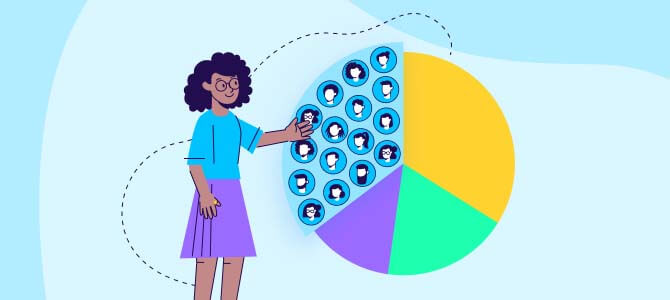
The best practices for user app segmentation include having in-depth knowledge of your customers, managing segmentation appropriately, setting specific and organized goals, and optimizing by tests and reiteration.
1 – Customer knowledge
Collecting data and getting feedback from customers is vital to understand them better. Your app marketing efforts benefit from having as much useful knowledge about your customers as possible. Collect this information in a way that follows privacy rules and makes it most beneficial.
Many organizations create imaginary profiles that describe their best target customers. You want to know your users, where they come from, and why they download and use your app.
What are your customer’s pain points? Does your app reduce your customers’ pain and solve a specific problem?
2 – Segmentation management
The common wisdom is that three major segmentation characteristics are usually sufficient to identify the bulk of users you want to target. Using more than three characteristics might be counterproductive.
3 – Goals
By identifying the segments, you will formulate goals for each group. These goals need to be actionable, such as motivating a customer to download your app or make an in-app purchase.
The goals must also be easy to measure, such as counting the number of downloads or adding up the sales. Moreover, the goals need to produce value for your brand.
4 – Optimization
Segmentation optimization comes from testing and re-testing the segmentation parameters and monitoring each segment’s key performance metrics (KPIs).
Key takeaways
- User app segmentation focuses on matching relevant messages with a targeted user segment to increase user engagement, reduce churn, and increase users’ lifetime value.
- Well-targeted campaigns using app user segmentation increase conversions, reduce churn, increase the long-term value of customers, and stimulate customer loyalty.
- Personalization of notifications increases open rates substantially.
- Collecting customer information in ways that respect privacy and are useful improves segmentation.


